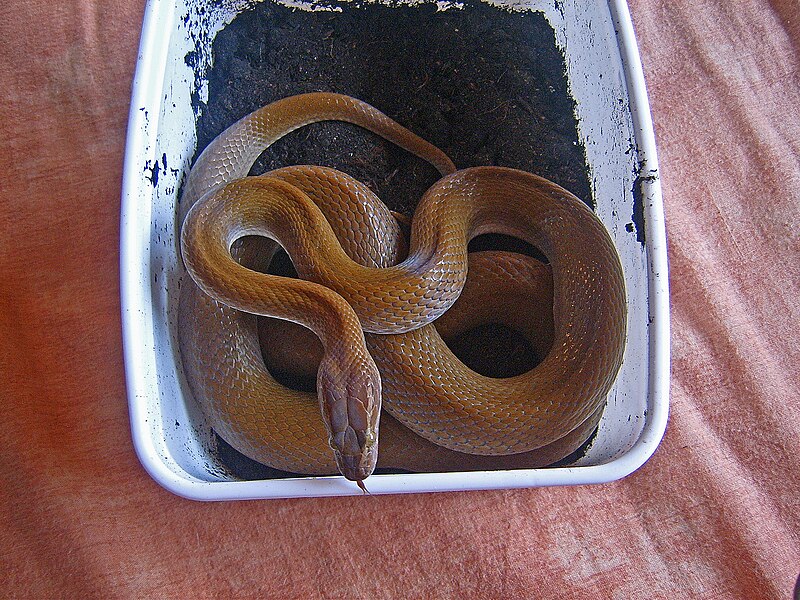The African or Brown House Snake (Lamprophis fuliginosus) is a very reliable breeder when properly kept, and is an excellent choice for those new to reproducing egg-laying snakes in captivity. What’s more, it is so gorgeous and variably-colored that many folks with long years of experience manage to find a place for a pair in their collections.
Range
Brown House Snakes may well be Africa’s most common and widespread serpents. Their range encompasses a wide variety of habitats extending throughout almost all of West and Sub-Saharan Africa.
Description
The “House” part of their name is fitting, as they adapt well to human presence. “Brown”, however, does this snake no justice, as they exhibit a stunning variety of iridescent background colors, including tan to almost black, orange, red, olive and green. Most have a pair of white stripes on the head, but the body itself may be solid in color, striped or spotted.
As you can imagine, breeders have great fun creating new colors and patterns, and a wide array are now available. Anyone looking for experience in color morph creation need search no further than the African House Snake.
Females average 3-4 feet in length, with some topping 5 feet; males rarely exceed 3 feet, and both sexes are slender in build.
Captive Breeding
 An ambient temperature of 78 F with a basking site of 85-90 F suits individuals from most populations. While some breed more reliably when chilled to 60 F for 4 weeks or so, others reproduce when maintained at a stable temperature year-round. Considering their extensive range, determining the origin of your specimens would be useful when considering captive reproduction.
An ambient temperature of 78 F with a basking site of 85-90 F suits individuals from most populations. While some breed more reliably when chilled to 60 F for 4 weeks or so, others reproduce when maintained at a stable temperature year-round. Considering their extensive range, determining the origin of your specimens would be useful when considering captive reproduction.
Mating usually occurs in the spring, with healthy females producing multiple clutches of 2-16 eggs each summer and fall. At 82 F, eggs typically hatch in 65-72 days, but a range of 55-85 days has been reported. Hatch rates are invariably high, often approaching 100%.
The young average 6-10 inches in length and, despite being quite slender, can usually take pink mice as a first meal. Sexual maturity is reached by age 2, when the snakes are 24-30 inches long.
Further Reading
Several of the 15 House Snake species inhabit the same areas, but consume different prey – please see this interesting field research report for more info.
House Snake Juvenile image referenced from wikipedia and originally posted by Dawson
Patternless House Snake image referenced from wikipedia and originally posted by Erikpaterson
 That Reptile Blog – Reptile, Amphibian and Exotic Pet Care and Information
That Reptile Blog – Reptile, Amphibian and Exotic Pet Care and Information


